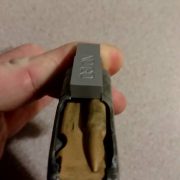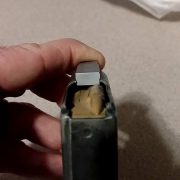Many of the weapon designers I have come to know well have very strong opinions on magazines. Outside of the suitability of one type (straight drop vs rocker) or staggered vs. single feed, they all universally agree that the weapon system is only as good as its magazines. It does not matter how well toleranced, machined, or timed a modern weapon is without good magazines that retain and present rounds to the action at the correct height, angle and pressure.
The AR-15/M-16 is no exception to this rule. While modern materials sciences have solved many issues for long-term storage, the military is well behind in the adoption of these materials (except the USMC, which went with the PMAG Gen 3 just a few weeks ago). Still, the military is notorious for using magazines well past their prime, either damaged from extended storage, misuse, and/or abuse. The old USGI magazines are typically beat to the dickens and back.

Until just after 2010, there was not really much of a test to determine if the feed lips were unserviceable. But, back in 2011, the US Army created and fielded USGI Go/No-Go Gauges for measuring feed lip spread. These tools have become especially critical with the fielding of steel tipped M855A1, which spread feed lips can cause major damage to the firearm with rounds feeding incorrectly.
These can be picked up through Brownells for those interested from home. Retail is $59.99
Per the 82nd Airborne Division Small Arms Master Gunner:
NOTE: The NSN listed previously was the NSN for the magazine. The actual NSN for the feed lips tool is: NSN 5120-01-574-0036
Some people had questions from the feed lips tool post as to how much of a difference there was between a go and nogo. I’ve got one of the prototype tools present to give you an example of its use.
If you look in picture one, you will see the tool on the back side of a tan follower USGI magazine.
As you can see, the nogo side is the top side, if it stops before reaching the nogo side, the feed lips are within tolerance. There is a considerable difference between go and nogo.
 Your Privacy Choices
Your Privacy Choices





